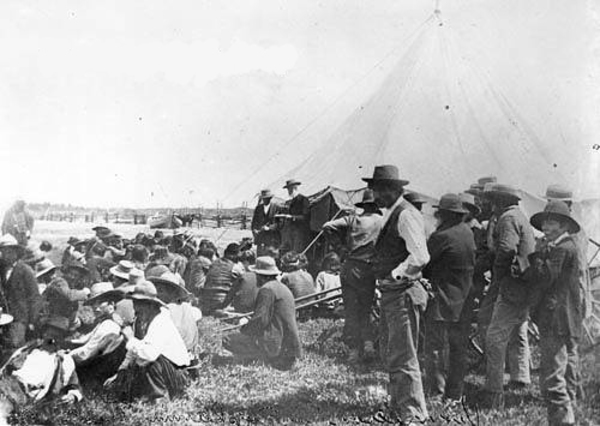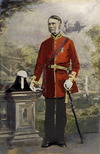Relations with Indigenous Peoples

Source: Courtesy of Wikimedia Commons
One of the issues covered in the discussions between Indigenous people and the government of Sir Wilfrid LAURIER was land ownership rights in the Canadian west. However, during the frantic race to that part of the country at the turn of the 20th century, the meeting of white interests with those of Indigenous people had enormous consequences for the latter, as recalled in the following excerpt from the biography of Clifford SIFTON:
“Lost in the rush for settlement and economic growth were the native peoples. Sharing the common assumptions of his day about them, Sifton aimed at cutting costs in the administration of the Department of Indian Affairs and in native education. He did not believe that native peoples could contribute in a significant way to the material expansion of the nation. In certain cases he permitted his officials to encourage the natives to give up some of their reserve lands for speculation and settlement. He also was responsible in 1899 for approving arrangements for Treaty No.8 [see David
The following excerpt from the biography of MOSTOS, a leader of the Woods Cree, describes some of the concerns expressed by Indigenous people during the negotiations over Treaty No.8:
“The negotiations began on 20 June [1899] and lasted two days. After the opening ceremonies, the commissioner of Indian affairs, David Laird, outlined the government’s offer of treaty terms and stressed that the freedom to hunt, fish, and trap would not be curtailed but rather confirmed. [Cree chief] Kinosew responded by asserting the right to negotiate additional terms that would benefit his people. Mostos supported him but also opened up different approaches to the discussions and tended to be more conciliatory. He stressed the need for peace between Indian and white man, a stance that may in part be attributed to the caution of age and his apparently good relations with the Roman Catholic Church and Father Albert Lacombe, who accompanied the commissioners. ‘Our country is getting broken up,’ he said to Laird. ‘I see the white man coming in, and I want to be friends. I see what he does, but it is best that we should be friends.’ Later he spoke to the education issue and received a positive response from the commissioner. He continued: ‘We must know what type of teachers the government intends to give us. Does it mean to impose on us those it likes, or will it take our opinions into account?’”
During Laurier’s administration, there were serious negative effects on Indigenous culture and lifestyle, as described in the following excerpt from the biography of PAYIPWAT, chief of the Plains Cree:
“The old leader came under a good deal of pressure after 1900. A new Indian agent, William Morris
For his part, the Mohawk journalist and activist Frederick Ogilvie LOFT commented publicly on residential schools:
“In the years before World War I, Loft continued to draw attention to native affairs. He wrote on the future of the Indian for the Globe in 1908 and a year later Saturday Night (Toronto) published his series on the Indian and education, a topic of particular concern to Loft. In the first of his four articles, he advocated an end to residential schools as ‘veritable death-traps,’ so unsanitary were they; he called instead for day schools on reserves.”
To learn more about relations between the Laurier government and Indigenous people, please consult the following list of biographies.





